Caridina shrimp are very colorful shrimp that can be actively adapted to be placed in freshwater aquariums. It is widely used in the modern fish tanks because of its striking colors and beautiful markings. However, the care and breeding of Caridina shrimp are different when it comes to water conditions and the type of substrate that should be used.
Content Table
Substrate turnover is one of the most important conditions needed for these shrimp to thrive, and having an active substrate will help to address this need.
This article is an all-inclusive resource that will teach everything about Caridina shrimp, their needs in the tank, their importance to the aquarium, the significance of active substrates, and the differences between Neocaridina shrimp vs caridina.
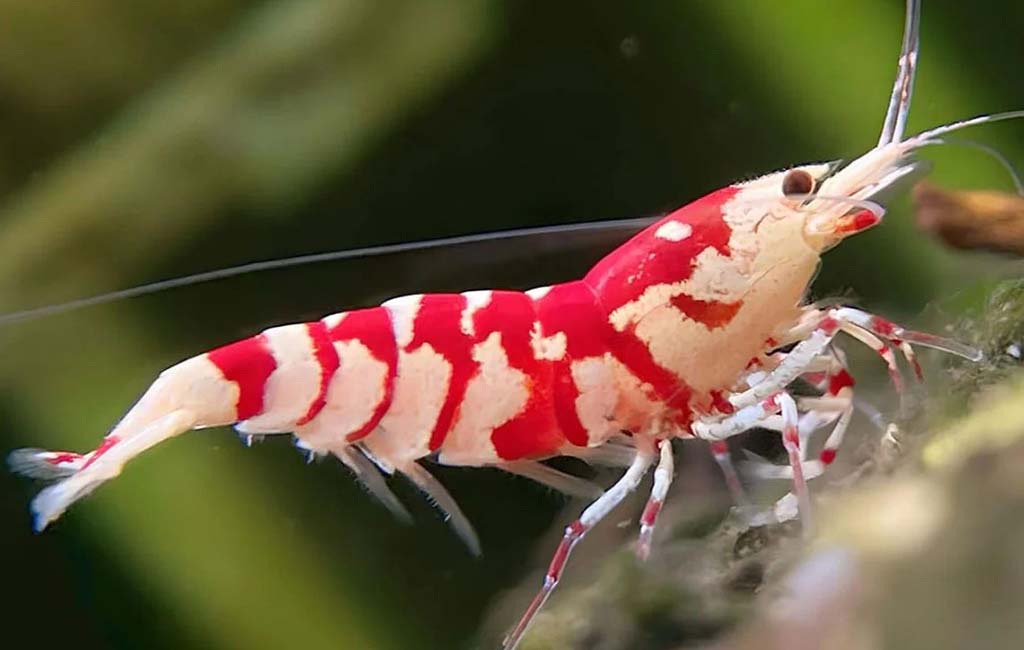
Caridina shrimp
Caridina Shrimp
What Are Caridina Shrimp?
Caridina shrimp refers to the shrimp that are in the Caridina genus, with the shrimp being freshwater hailing from Asia. These shrimp are favored by aquarists due to their bright colors, beautiful patterns, and specific behaviors.
Admittedly, they are not as tough skinned as other types of shrimps. For instance, the Neocaridina shrimp, Caridina species should be placed in an environment that has been well maintained for them to survive.
Caridina shrimp are quite beautiful to look at, but they are very sensitive to changes in water conditions. They are aquatic creatures and prefer their habitat to be water that is slightly, certainly not very acidic, with a pH of 5.5-6.5 and water temperature of 68-74°F or 20-23°C.
Some shrimp lovers choose them for breeding with various colors and patterns, thus being a favorite among the audience. Hence, their amiable attitude towards humans makes them ideal for planted aquariums, outcompeting algae/biodust accumulation in the water environment.
Species and Colors of Caridina Shrimp
Caridina shrimp come in various species and color variations, with some of the most popular ones being:
- Crystal Red Shrimp (Caridina cantonensis) – Red and white coloration
- Crystal Black Shrimp (Caridina cantonensis) – Black and white coloration
- Shadow Panda Shrimp – Deep black with white markings.
- Blue Bolt Shrimp – Stunning blue hue
- Tangerine Tiger Shrimp – Orange with black stripes
- Golden Bee Shrimp – Pure golden-white coloration
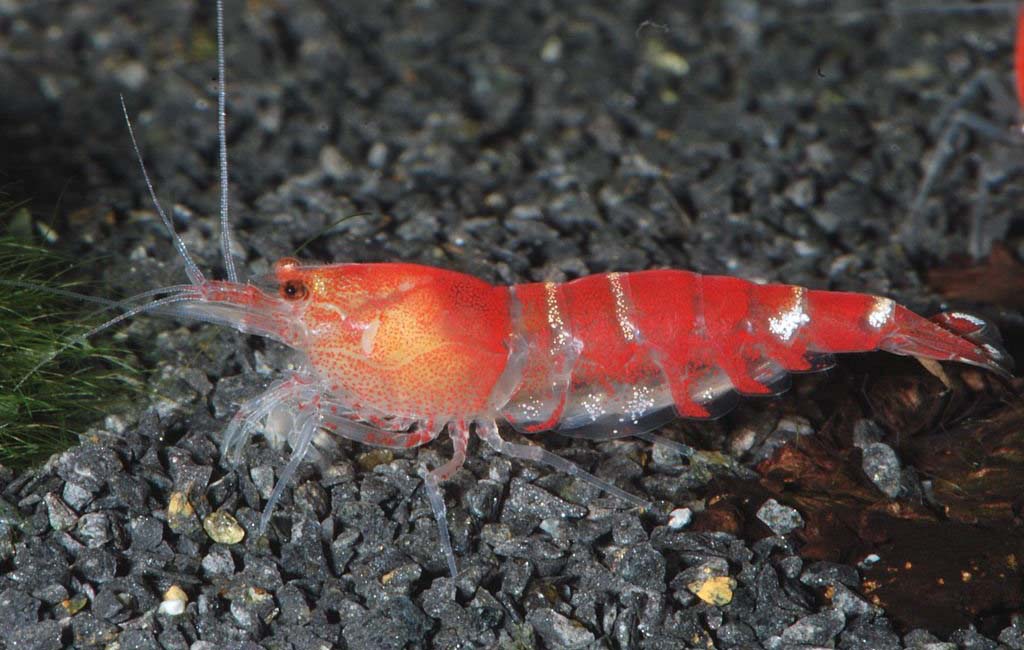
Beginner’s Guide to Caridina Shrimps
Beginner’s Guide to Keeping Caridina Shrimps
Caridina shrimp are not as hardy as Neocaridina shrimp, so beginners need to pay attention to their requirements. Here are the key factors for keeping them successful:
Tank Setup and Water Parameters
- Tank Size: Minimum of 10 gallons for stability
- Water Temperature: 68-74°F (20-23°C)
- pH Levels: 5.5-6.5
- TDS (Total Dissolved Solids): 100-150 ppm
- GH (General Hardness): 4-6 dGH
- KH (Carbonate Hardness): 0-2 dKH
Filtration and Maintenance
- Use a sponge filter or HOB filter with a pre-filter sponge to prevent shrimp from being sucked in.
- Perform weekly 10-20% water changes with remineralized RO (Reverse Osmosis) water.
- Keep ammonia and nitrites at 0 ppm, and nitrates below 10 ppm.
Diet and Feeding
Caridina shrimp are omnivorous and require a balanced diet:
- High-quality shrimp pellets
- Blanched vegetables (spinach, zucchini, etc.)
- Bacteria-based biofilm growth
- Occasional protein supplementation (like dried daphnia)
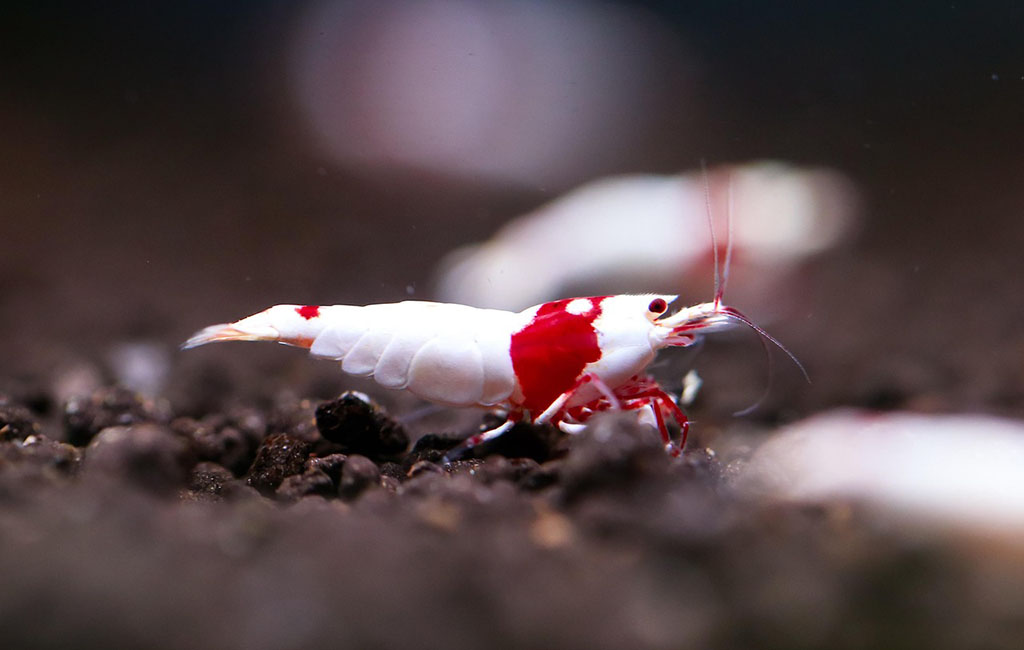
Substrate for Caridina Shrimps
Active Substrate With Caridina Shrimps
What Is an Active Substrate?
An active substrate in an aquarium is a bottom layer that contributes towards the determination of the level of pH and KH in the water holding tank. Different from inert substrates, active ones release tannins and organic compounds, which make the water acidic or soft, which are suitable for soft-water species such as Caridina shrimp. Such materials include volcanic soil, clay, or specialized aqua soil, and they biodegrade over time, and it is necessary to replace them every one to two years.
Benefits of Active Substrate for Caridina Shrimp
- Stabilizes pH – Maintains the ideal acidic environment (pH 5.5–6.5) for Caridina shrimp.
- Softens Water – Reduces KH (carbonate hardness) and GH (general hardness) to match soft-water conditions.
- Promotes Beneficial Bacteria Growth – Provides surface area for nitrifying bacteria, aiding in biological filtration and ammonia breakdown.
- Enhances Biofilm Development – Biofilms are a natural food source for shrimp, improving their health and survival rates.
- Improves Shrimp Coloration – The dark-colored substrate enhances shrimp colors, making them more vibrant and visually striking.
- Encourages Natural Behavior – Mimics the shrimp’s natural habitat, reducing stress and promoting breeding.
Recommended Active Substrates
Some of the best active substrates for Caridina shrimp include:
- Amazonia Soil – Rich in nutrients, lowers pH, and enhances plant growth.
- Rio Escuro – Provides excellent buffering capacity and promotes biofilm.
- Nature Soil – Maintains stable parameters with minimal ammonia leaching.
- Stratum Substrate – An affordable option that supports beneficial bacteria growth.
In choosing an active substrate for shrimp, it is important to get one that will help maintain the soft, acidic water in which the Caridina shrimp thrives. These substrates also foster growth of beneficial bacteria and biofilm, as well as naturally enhance the appearance of a shrimp colony.
Advice for Breeding Caridina Shrimp
Breeding of Caridina shrimp is not very difficult but does entail details and care about the conditions they are in. Here is the beginner guide of Caridina shrimps breed.
- Stable Water Parameters
Keep pH (5.5-6.5), GH (4-6), KH (0-1), and TDS (100-150 ppm) within recommended ranges. This is because random changes can dramatically decrease the chances of breeding.
- Mature Tank
The mature aquarium should be ready for at least 6–8 weeks in the initial stage and should develop a steady environment before a successful breeding of the shrimp. The ammonia and nitrite levels should be 0 since stressing factors such as high ammonia and nitrite are unfavorable for the shrimp and may cause mortality.
- Optimal Diet
Provide a balanced diet of accurately formulated shrimp pellets, blanched vegetables, biofilm to boost the reproductive health of the shrimps. It is recommended to incorporate bee pollen or Indian almond leaves into the diet to help with fertility.
- Hiding Spots
The availability of java moss, subwassertang, riccia, cholla wood, and leaf litter gives baby shrimp a place to hide, reduces predation, and increases survival.
- Low-Stress Environment
Do not put your baby shrimp close to aggressive species or large fish that may harm them. Only use tanks for shrimp only or completely harmless fish like small snails.
Signs of Successful Breeding
- Females carrying eggs: Mated females become gravid with eggs, a clutch which becomes visible under the swimmerets, and these may be yellow, green, or brown.
- Hatchlings appearing after 3–4 weeks: This stage lasts for about 2 weeks in the females and 3 weeks in the males. Hatchlings are miniature, transparent shrimp and bear a strong resemblance to their parents. It is, nevertheless, notable that they become more colorful as they grow older.
- Increased shrimp activity: The shrimp must be active and display natural foraging and social behaviors, which signals a healthy breeding ground for the species.
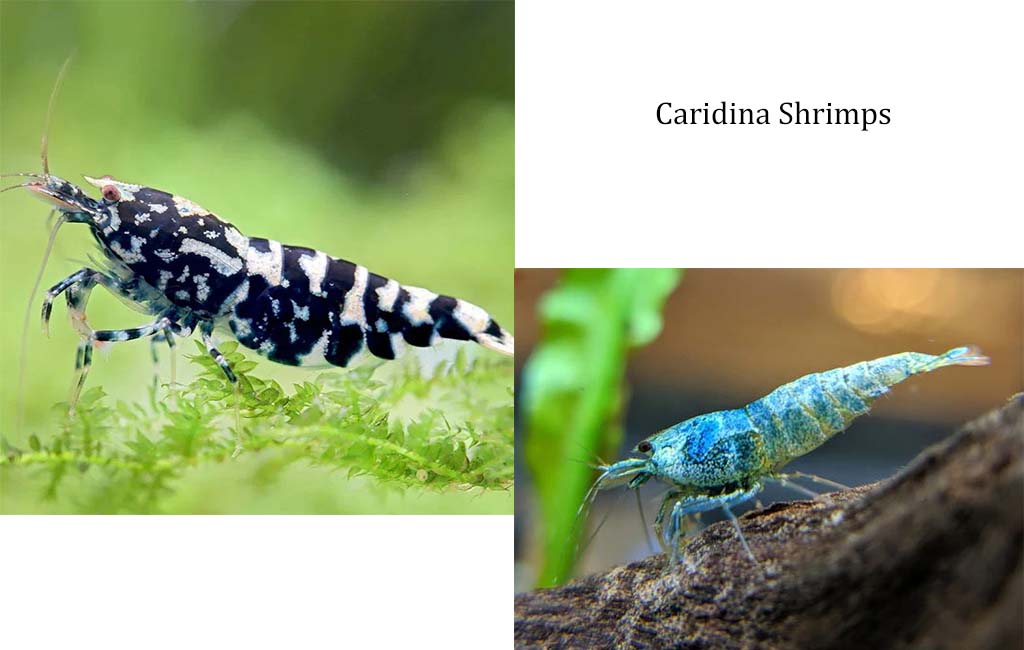
Neocaridina shrimp vs caridina
What Is the Difference Between Neocaridina Shrimp and Caridina?
1. Water Parameter Differences
- Caridina Shrimp: Require soft, acidic water (pH 5.5-6.5, GH 4-6, KH 0-2)
- Neocaridina Shrimp: Prefer harder, alkaline water (pH 6.5-8.0, GH 6-8, KH 3-5)
2. Color and Variety
- Caridina Shrimp: More intricate color patterns (Crystal Red, Blue Bolt, Shadow Panda, etc.)
- Neocaridina Shrimp: Solid, vibrant colors (Cherry, Blue Dream, Yellow, etc.)
3. Difficulty Level
- Caridina Shrimp: More sensitive to water parameters and require active substrate.
- Neocaridina Shrimp: More beginner-friendly and adaptable to a wider range of water conditions.
4. Role in Tanks
- Caridina Shrimp: Best for advanced shrimp keepers looking for aesthetic diversity.
- Neocaridina Shrimp: Suitable for community tanks and beginner shrimp keepers.
Leaving a Lasting Impression
Caridina shrimp are visually appeal species that are suitable to be included in the freshwater aquarium since they have interesting behaviors. However, for their care, you will need a soft acidic water and an active substrate present to help stabilize the parameters.
Raising them is not easy, however, those who are prepared to care for their requirements will not find it a regrettable task. This information can help aquarists to differentiate Caridina and Neocaridina shrimp species in order to choose the one that is right for them. If addressed properly, it is quite easy to keep Caridina shrimp, providing aesthetic and biological benefits in the tank.
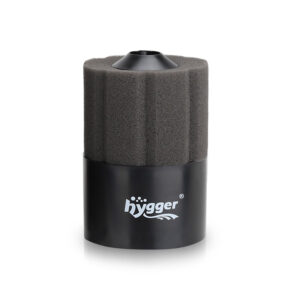
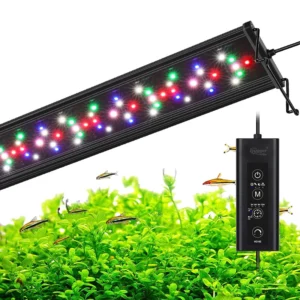
Leave a comment